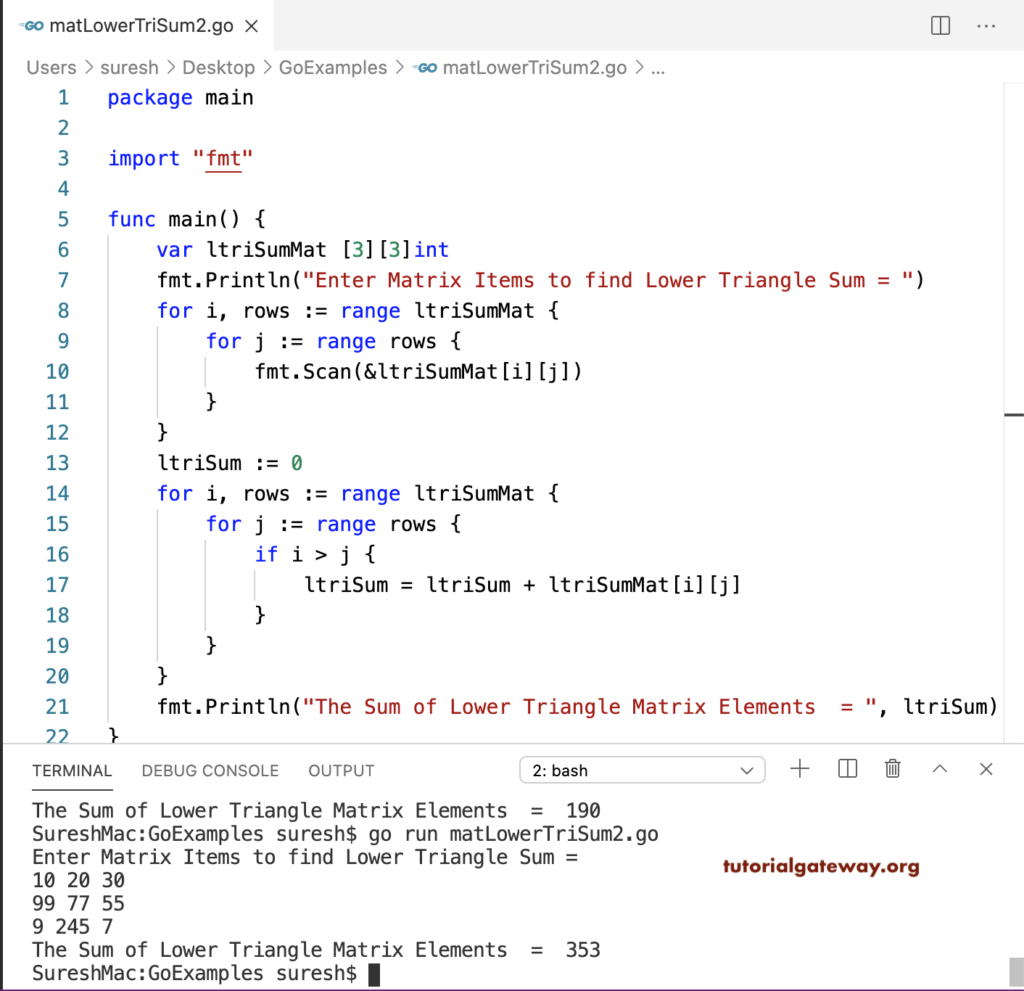Write a Go Program to Find the Sum of the lower triangle items in a Matrix. In this Go sum of Matrix Lower Triangle example, we used the nested for loops to iterate the matrix row and column items. Within the loop, the if statement (if i > j) checks whether the row value is greater than the column. If True, add that item value to the matrix lower triangle sum.
package main
import "fmt"
func main() {
var i, j, rows, columns int
var ltriSumMat [10][10]int
fmt.Print("Enter the Matrix rows and Columns = ")
fmt.Scan(&rows, &columns)
fmt.Println("Enter Matrix Items to find Lower Triangle Sum = ")
for i = 0; i < rows; i++ {
for j = 0; j < columns; j++ {
fmt.Scan(<riSumMat[i][j])
}
}
ltriSum := 0
for i = 0; i < rows; i++ {
for j = 0; j < columns; j++ {
if i > j {
ltriSum = ltriSum + ltriSumMat[i][j]
}
}
}
fmt.Println("The Sum of Lower Triangle Matrix Elements = ", ltriSum)
}
Enter the Matrix rows and Columns = 3 3
Enter Matrix Items to find Lower Triangle Sum =
10 20 30
40 50 60
70 80 90
The Sum of Lower Triangle Matrix Elements = 190Golang Program to Find the Sum of Lower Triangle items in a Matrix using For loop range.
package main
import "fmt"
func main() {
var ltriSumMat [3][3]int
fmt.Println("Enter Matrix Items to find Lower Triangle Sum = ")
for i, rows := range ltriSumMat {
for j := range rows {
fmt.Scan(<riSumMat[i][j])
}
}
ltriSum := 0
for i, rows := range ltriSumMat {
for j := range rows {
if i > j {
ltriSum = ltriSum + ltriSumMat[i][j]
}
}
}
fmt.Println("The Sum of Lower Triangle Matrix Elements = ", ltriSum)
}

